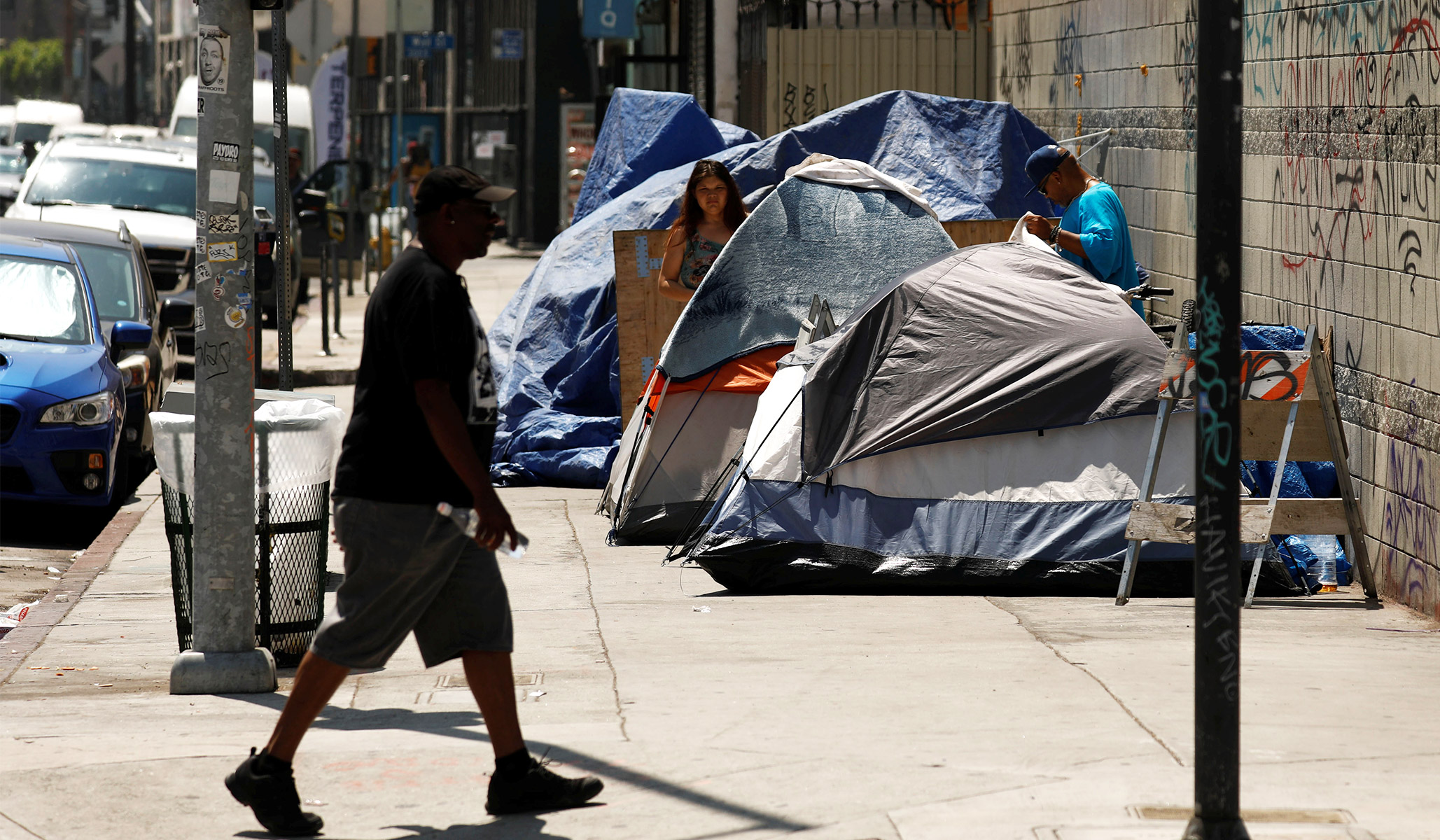


A ‘Housing First’ strategy hasn’t reduced homelessness in crucial places where it’s been tried.
NRPLUS MEMBER ARTICLE T he Biden administration recently unveiled a new federal plan to “prevent and end homelessness” based on a “Housing First” approach. This approach was at the leading edge of homeless policy 20 years ago; since then, California, Utah, and select major cities in the U.S. have embraced the philosophy.
The Housing First model emphasizes providing the homeless with permanent housing regardless of whether individuals are working to overcome obstacles to stability, including mental-health issues, substance-use disorder, and unemployment. But in many places where the model has been tried, homelessness has grown.
Given the time that has elapsed since adopting the Housing First model and the push to adopt it at the national level, it is worth considering outcomes in some places that have implemented it. California is undoubtedly the largest place that has followed the Housing First approach. As of 2016, any state-funded homeless program in California must comply with Housing First principles.
Unfortunately, despite a significant funding commitment at the state and local level, chronic homelessness rose substantially in the years following statewide adoption of Housing First policy. Chronic homelessness in California fell by 51 percent between 2005 and 2016, but the trend reversed after 2016, the year California implemented Housing First statewide. From 2016 to 2022, chronic homelessness increased by 93 percent.
More in Homelessness Crisis
-
Progressive Good Intentions Run into Big Government in San Francisco
-
Disabled Residents Sue Sacramento for Failing to Clear Homeless Camps from Sidewalks
-
Biden Homeless Plan Recycles Failed Housing-First, Equity-Focused Playbook, Advocates Say
Although California’s Housing First policy prioritizes the chronically homeless, which constitute a subset of the overall homeless population, California’s total homeless population has also grown since adopting Housing First: Since it was implemented statewide in 2016, the total homeless population has increased by 45 percent. It shouldn’t be entirely surprising that 30 percent of the nation’s homeless population now live in California, a state that also has the highest homelessness rate in the country (44 per 10,000 people).
Although California is well known for its challenges with homelessness, Utah was the first state to adopt the Housing First approach nearly two decades ago. The Housing First philosophy rode in on a wave of optimism, and by 2015, national reporting claimed that Utah could “just about declare victory…[in] its goal of ending chronic homelessness.” This favorable coverage partly prompted other places to adopt the policy.
Unfortunately, the cited declines in homelessness in Utah resulted at least partially from changing data definitions and other methodological issues, including questionable data annualization practices. Moreover, in more recent years, chronic homelessness has risen rapidly in Utah: Chronic homelessness rose 328 percent statewide between 2017 and 2022, and 297 percent over the same period in Salt Lake County, where most of the state’s homeless population resides.
One commonality between California and Utah? Both states have experienced rapidly increasing home prices and declining housing affordability. In Utah, housing costs roughly twice as much on average today as in 2015, and California housing costs 80 percent more than it did in 2015.
Expensive housing makes a Housing First approach less sustainable. A recent audit by Utah’s Office of the Legislative Auditor General found the cost of building permanent housing is high, with an estimated $250,000–$275,000 required per unit built. In Los Angeles County, a 20-room hotel was purchased and renovated to produce permanent housing for the homeless at the cost of $275,000 per unit, and a 39-room motel was renovated at the cost of $330,000 per unit.
These costs may be rising further. An audit of a project in Los Angeles found that 14 percent of homeless housing units cost more than $700,000 a unit to build. Meanwhile, the lower cost of housing and associated lack of traditional zoning helps explain why Houston, Texas, is seeing better outcomes with their Housing First policy than California or Utah.
What does this mean for policy? Surely disappointing outcomes in prominent Housing First states should give the Biden administration pause as it pushes a federal homelessness plan based on the same philosophy. Rather than adopting Housing First, the administration should instead allow states and localities to continue experimenting with different strategies for solving homelessness.
If the administration carries on with its current plans, however, it could be condemning the rest of the country to similarly disappointing results.
